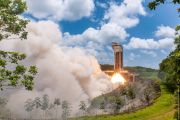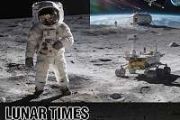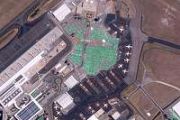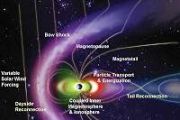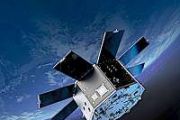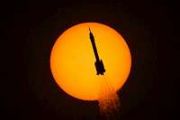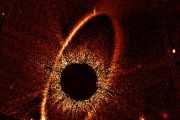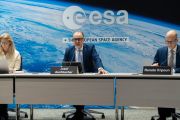
Copernical Team
How to pick the right web testing framework for your project
 The selection of a web testing framework may at times not be very easy. In fact, with so many tools that claim to speed up your testing process, it often comes down to which tool best fits your team's skill sets, project scope, and long-term testing objectives. Whether you're a QA manager, SDET, tester, or engineer, you want a framework that supports quality and grows with your development process
The selection of a web testing framework may at times not be very easy. In fact, with so many tools that claim to speed up your testing process, it often comes down to which tool best fits your team's skill sets, project scope, and long-term testing objectives. Whether you're a QA manager, SDET, tester, or engineer, you want a framework that supports quality and grows with your development process The Quantum Age will be Powered by Fusion
 Fusion is the cosmic process that powers stars, shapes galaxies, and enables the chemical diversity needed for life. From the earliest stars to modern planetary systems, fusion converts hydrogen into heavier elements, forging the matter that makes up worlds, atmospheres, and living organisms. The Sun's steady fusion output governs Earth's climate and underlies all biological and technological energy flows, from photosynthesis to fossil fuels.
Fusion is the cosmic process that powers stars, shapes galaxies, and enables the chemical diversity needed for life. From the earliest stars to modern planetary systems, fusion converts hydrogen into heavier elements, forging the matter that makes up worlds, atmospheres, and living organisms. The Sun's steady fusion output governs Earth's climate and underlies all biological and technological energy flows, from photosynthesis to fossil fuels. Hubble sees asteroids colliding around nearby star

In a historical milestone, astronomers using the NASA/ESA Hubble Space Telescope witnessed the catastrophic collisions in a nearby planetary system. As they observed the bright star Fomalhaut, scientists saw the impact of massive objects around the star. The Fomalhaut system appears to be in a dynamical upheaval, similar to what our Solar System experienced in its first few hundred million years after formation.
Catch the Ursid meteor shower as it peaks just before Christmas
Verifying that you are not a bot
342nd Council: Media information session
 Video:
00:00:00
Video:
00:00:00
Watch the replay of the media information session in which ESA Director General Josef Aschbacher and ESA Council Chair Renato Krpoun (CH) update journalists on key decisions taken at the ESA Council meeting, held at ESA Headquarters in Paris on 17 and 18 December 2025.
Gaia finds hints of planets in baby star systems
 Image:
Image:
Ever wondered how planetary systems like our own Solar System form? Thanks to the European Space Agency’s Gaia space telescope, we're getting a unique peek behind the cosmic curtain into these dusty environments.
In this collage, we see the images of 31 baby star systems. Click on the white dots next to each system to find out more about them. The bar on the top right shows the scale of the image in Astronomical Units (AU).
The collage also shows our own Solar System for reference on the bottom right, as it is predicted to have looked at
NASA CubeSat puts dual micropropulsion systems through orbital trial
 NASA and commercial partners are using a small satellite mission called DUPLEX (Dual Propulsion Experiment) to demonstrate new propulsion options for small spacecraft operating in low Earth orbit and on future missions deeper into the solar system. Two micropropulsion systems that draw propellant from spools of polymer fibers are now undergoing an in-space test campaign after the CubeSat's deplo
NASA and commercial partners are using a small satellite mission called DUPLEX (Dual Propulsion Experiment) to demonstrate new propulsion options for small spacecraft operating in low Earth orbit and on future missions deeper into the solar system. Two micropropulsion systems that draw propellant from spools of polymer fibers are now undergoing an in-space test campaign after the CubeSat's deplo Galactic Slots: Space-Themed Games with Out-of-This-World Bonus Features
 Space-themed sweepstakes slots have become a standout genre for players who crave mystery, exploration, and cinematic visuals. These games create entire universes inside their reels - from glowing nebula fields to alien planets and interstellar soundscapes.
Space-themed sweepstakes slots have become a standout genre for players who crave mystery, exploration, and cinematic visuals. These games create entire universes inside their reels - from glowing nebula fields to alien planets and interstellar soundscapes. Southern Launch to Host Lux Aeterna Re-Entries South Australia
 Southern Launch and Lux Aeterna have signed a contract to conduct orbital re-entries of Lux Aeterna's reusable satellite infrastructure to the Koonibba Test Range in South Australia. The partnership will support the future of circular space manufacturing and operations with rapid, reliable, and flexible access to orbit, enabling governments, businesses, and research organizations to maximise the
Southern Launch and Lux Aeterna have signed a contract to conduct orbital re-entries of Lux Aeterna's reusable satellite infrastructure to the Koonibba Test Range in South Australia. The partnership will support the future of circular space manufacturing and operations with rapid, reliable, and flexible access to orbit, enabling governments, businesses, and research organizations to maximise the Thorium 229 nuclei driven by laser in opaque solid moves optical nuclear clock research forward
 A team from the University of California Los Angeles (UCLA), Ludwig Maximilian University of Munich (LMU), and Johannes Gutenberg University Mainz (JGU) has for the first time excited the atomic nucleus of the isotope thorium 229 with laser light while the atoms are embedded in a non transparent solid host. The experiment demonstrates that nuclear laser excitation is possible even when the surro
A team from the University of California Los Angeles (UCLA), Ludwig Maximilian University of Munich (LMU), and Johannes Gutenberg University Mainz (JGU) has for the first time excited the atomic nucleus of the isotope thorium 229 with laser light while the atoms are embedded in a non transparent solid host. The experiment demonstrates that nuclear laser excitation is possible even when the surro 














